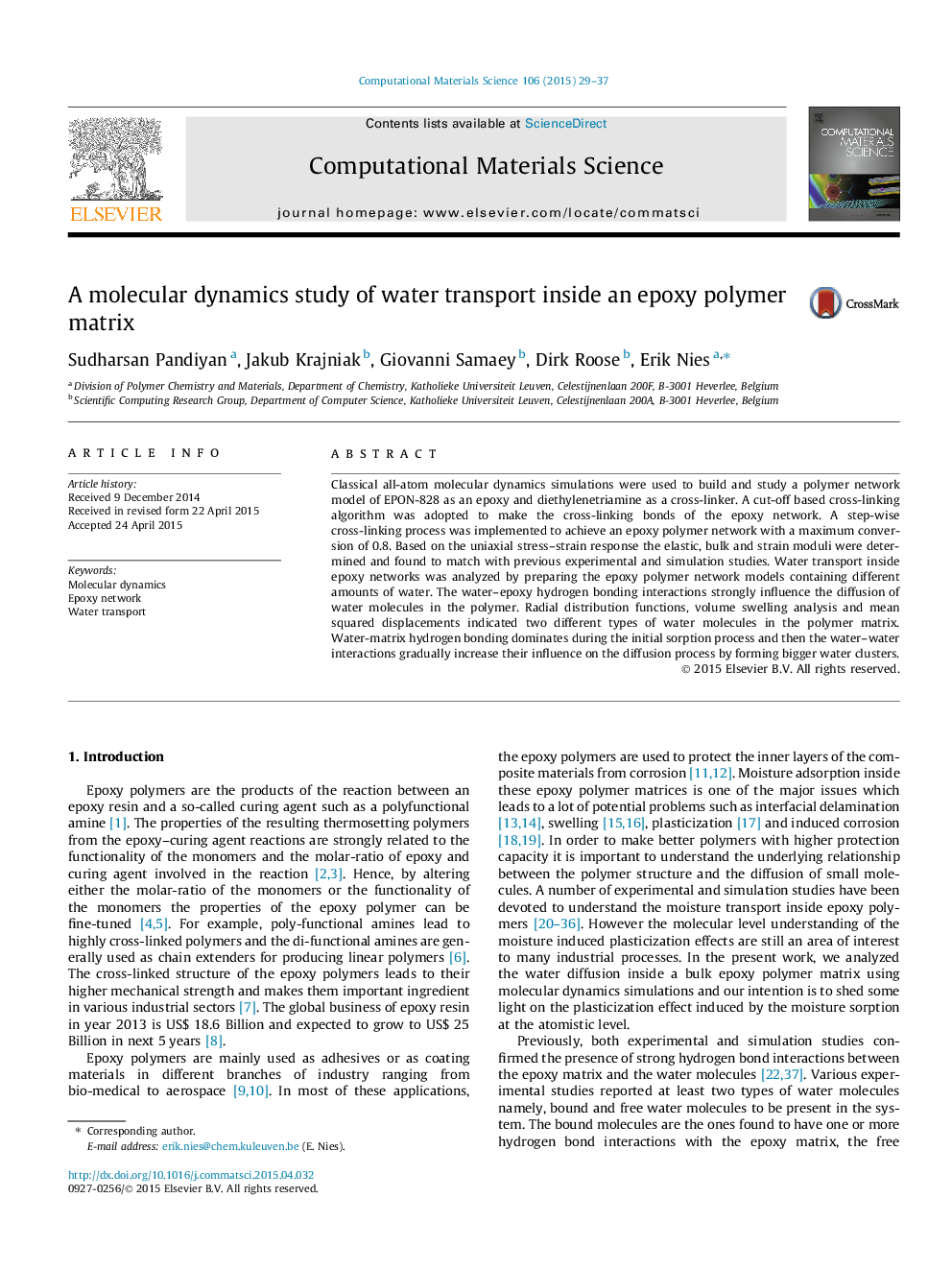| Article ID | Journal | Published Year | Pages | File Type |
|---|---|---|---|---|
| 1560196 | Computational Materials Science | 2015 | 9 Pages |
Abstract
Classical all-atom molecular dynamics simulations were used to build and study a polymer network model of EPON-828 as an epoxy and diethylenetriamine as a cross-linker. A cut-off based cross-linking algorithm was adopted to make the cross-linking bonds of the epoxy network. A step-wise cross-linking process was implemented to achieve an epoxy polymer network with a maximum conversion of 0.8. Based on the uniaxial stress-strain response the elastic, bulk and strain moduli were determined and found to match with previous experimental and simulation studies. Water transport inside epoxy networks was analyzed by preparing the epoxy polymer network models containing different amounts of water. The water-epoxy hydrogen bonding interactions strongly influence the diffusion of water molecules in the polymer. Radial distribution functions, volume swelling analysis and mean squared displacements indicated two different types of water molecules in the polymer matrix. Water-matrix hydrogen bonding dominates during the initial sorption process and then the water-water interactions gradually increase their influence on the diffusion process by forming bigger water clusters.
Related Topics
Physical Sciences and Engineering
Engineering
Computational Mechanics
Authors
Sudharsan Pandiyan, Jakub Krajniak, Giovanni Samaey, Dirk Roose, Erik Nies,
